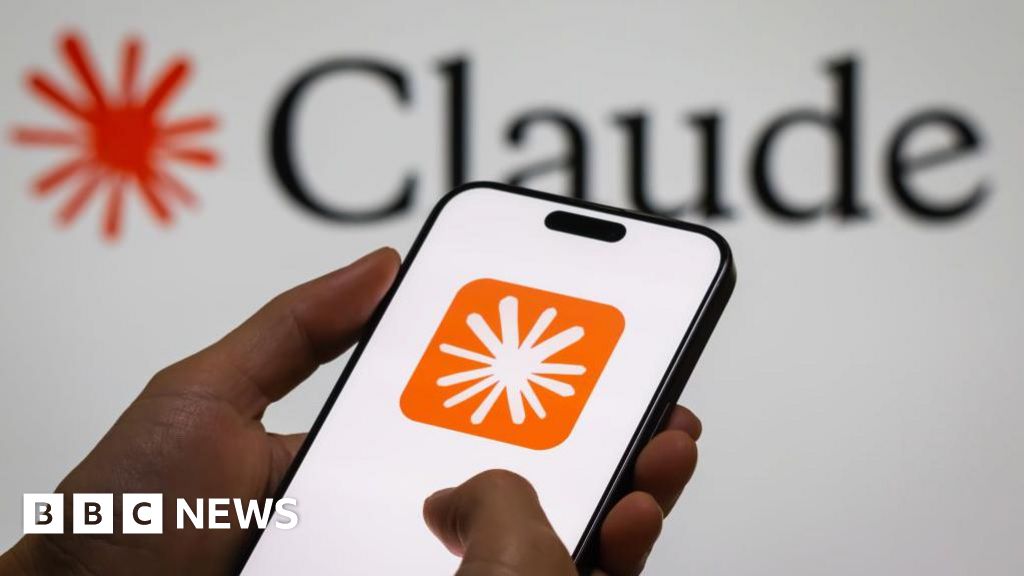ARTICLE AD BOX
Image source, Getty Images
Eight million UK homes now have access to full-fibre broadband, a record rise of three million since last year.
But fewer than a quarter of those have chosen to upgrade to a full-fibre package, regulator Ofcom's annual Connected Nations report says.
Many could upgrade without paying more than they currently did, Ofcom said.
The number of upgrades was rising, with 750,000 homes moving to full-fibre services in 2021, but the rapid rollout meant take-up was likely to lag behind.
Feature film
Uswitch.com telecoms expert Ernest Doku said: "Taking full fibre infrastructure to eight million households is an impressive achievement - but it is sobering to think that fewer than two million are actually taking advantage of these connections."
The report reveals 47% of homes - 13.7 million - now have 1GBps-capable broadband, provided by full-fibre or the latest coaxial cable networks.
But it is based on data before the announcement of Virgin Media's upgrade, which would push the figure past 15 million to "around 65%" of homes.
In theory, 1GBps speeds would allow a feature film to be downloaded in less than a minute, Ofcom said.
Image source, Getty Images
The UK government has set a target of at least 85% 1GBps coverage by 2025.
Digital Secretary Nadine Dorries said the report showed "major progress on our commitment to deliver a digital infrastructure revolution".
The report also found no let up in the increasing appetite for data among broadband consumers.
Average monthly data usage now stands at 453GB per connection, up from 429GB last year and 315GB in 2019.
"Whilst peak usage remains in the evening, networks continued to see high demand during the day due to continued working from home," the report says.
Wireless technologies
But 123,000 homes and businesses are still without access to a decent broadband connection, the report estimates.
And Ofcom says it will work with the government on solving this problem, which could involve new wireless technologies and "the latest generation of satellites, which could offer good broadband services in rural areas not covered by other network deployments".
Half of properties in the UK were now in an area with outdoor 5G coverage, the report found.
Consumer take-up of 5G remained "relatively modest", at about 10% of all active devices.
But uptake was increasing, Ofcom said, with 800,000 active 5G devices in the UK in 2020 rising to more than six million handsets in September 2021.
Image source, Getty Images
The report also highlights a number of projects launched last year to improve reception and connectivity on trains, overground and underground, which Ofcom acknowledges can be poor.
Sector-wide cyber-attack
The UK's mobile network operators also had to adapt to changing consumer behaviour caused by Covid-19.
"One associated consequence of Covid-19 was an increased emphasis on UK holidays," the report says, "which also led to increased demand in certain rural locations."
Operators responded to this change by deploying new sites and upgrading capacity.
"As a result, some operators fast-tracked key coastal towns for significant capacity upgrades, with at least 80 new deployments reported," the report says.
Technology problems at three companies, Fastly, Akamai and Facebook, had a significant impact on consumers accessing online services this year, the report notes.
And the UK community of smaller voice over internet protocol (VoIP) service providers faced a persistent and sector-wide cyber-attack, "the objective of which has been to extort a fee from each of the operators who have been attacked, in order to secure relief from future attacks for a period of 12 months".
Ofcom said it was working with the government and the National Cyber Security Centre on the response to the attacks.

 3 years ago
49
3 years ago
49








 English (US) ·
English (US) ·